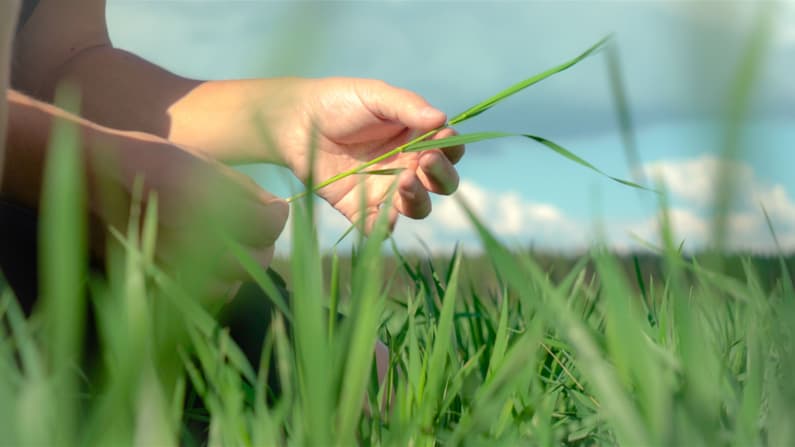HKScan is the first to calculate the environmental footprint of the HKScan AgroFood Ecosystem[®] pilot farm. The calculation included the carbon and water footprints of primary production of Kariniemen[®] chicken and the impact of production on eutrophication and biodiversity. The results show that a large part of environmental impact comes from feed.
HKScan’s responsibility work is continuous development and testing of new methods. The company’s goal is increasingly responsible food production. In HKScan’s AgroFood Ecosystem® pilot, Envitecpolis, specialised in food chain responsibility, calculated the carbon and water footprints in the primary production of Kariniemen chicken and assessed the impact of production on eutrophication and biodiversity. The necessary initial data were collected from the farm for one calendar year. These different elements of the environmental footprint are important indicators that help identify the emission reduction targets of the chain.
The calculation showed that a chicken’s carbon and water footprint were at a good level. The eutrophication effect was estimated to be low. In addition, the activities maintaining biodiversity have been well taken into account in the operating environment in line with the production sector in question.
“We are proud to be the first in the world to announce the environmental footprint of the primary production of broilers. At HKScan, we want to develop in all areas of the environment. Together with our contract farmers and ecosystem partners, we are currently examining best practices that we will scale across our markets. In our work, we proceed in accordance with the Science Based Targets initiative," emphasises Ulf Jahnsson, VP, Strategic development primary production at HKScan.
“Environmental reviews often focus on a specific area. A comprehensive examination of the farm's operations and production provides a more extensive view of the environmental impact. In this way, the development of the farm's operations and the reduction of the environmental footprint can be planned as a whole, assessing the significance of various measures through all these areas,” says Senja Arffman, Senior advicer at Envitecpolis Oy.
Partnerships and state-of-the-art technology accelerating development
As for the pilot farm, the carbon footprint of Kariniemen chicken was 2.33 CO2e per kilogram of animal live weight. The result is small and in line with the previous Kariniemen's carbon footprint results. HKScan’s goal is carbon neutrality throughout the food chain from farms to consumers by the end of 2040.
The AWARE method was used in the water footprint calculation. The method takes into account the effects of water scarcity and geographical differences in water resources. In the HKScan’s market areas, there are clean and abundant water resources enabling sustainable primary production. Kariniemen chicken’s AWARE water footprint was 0.397m3 per kilogram of animal live weight. Due to the novelty of the AWARE method, the results on the water footprints of different foods are still limited. An interesting result can be found in the study on the climate impact calculation and water footprint of greenhouse products: the AWARE-based water footprint of Spanish tomatoes was found to be about 91 times higher than in Finland.
The eutrophication study assessed the ability of crops to utilise the nutrients of fertilisation as effectively as possible. Nitrogen and phosphorus balances on the pilot farm turned out to be above average. According to the results, nutrient utilisation was efficient in the pilot farm’s field farming, so the possibility of nutrient run-off is small.
“We continuously study and develop measures that allow us to reduce the environmental impact of meat production. For example, raising the yield level of a field reduces the carbon and water footprint of meat and increases the efficiency of nutrient use. We are doing this work in a very practical way together with our contract farmers and partners during the current growing season as well. We utilise, for example, Yara’s satellite technology for fertilisation during the growing season. In this way, we can increase resource efficiency, optimise the crop’s ability to use nutrients and at the same time, prevent eutrophication. We use the state-of-the-art technology of Vaisala and Datasense in the carbon flux measurement verifying carbon sequestration. During the last growing season, we managed to automate the measurements, and now it is possible to monitor the results almost in real time,” says Heikki Aro, R&D Manager at HKScan.
The Cool Farm Tool software was used in the biodiversity review. Measures maintaining biodiversity have been well taken into account in the operating environment in line with the pilot farm’s production sector. The farm had plenty of areas, such as edges of fields and roadsides, which provide a rich habitat for micro-organisms. Biodiversity can be further developed on a farm-by-farm basis by, for example, utilising catch crops and choosing the best tillage techniques in terms of biodiversity.
Further information:
- Ulf Jahnsson, VP, Strategic development primary production, HKScan, tel. +358 400 784 193, ulf.jahnsson@hkscan.com
- Senja Arffman, Senior advicer, Envitecpolis, tel. +358 50 353 1818, senja.arffman@envitecpolis.fi
- HKScan Media Desk, communications@hkscan.com, tel. +358 10 570 5700
At HKScan, we make life tastier – today and tomorrow. Our strategic target is to grow into a versatile food company. Our responsibly produced, delicious products are part of consumers’ varied food moments – both every day and on special occasions. We have some 7,000 HKScan professionals applying more than 100 years of experience to make locally produced food. For us at HKScan, responsibility means continuous improvements and concrete actions throughout the food chain. As part of our Zero Carbon programme, we are targeting a carbon-neutral food chain from farms to consumers by the end of 2040. Our home markets cover Finland, Sweden, the Baltics and Denmark. Our strong product brands include HK®, Kariniemen®, Via®, Scan®, Pärsons®, Rakvere®, Tallegg® and Rose™. Through our strategic partnerships, we are also known for Kivikylän®, Tamminen® and Boltsi brands. HKScan is a publicly listed company, and in 2020, our net sales totalled nearly EUR 1.8 billion.

